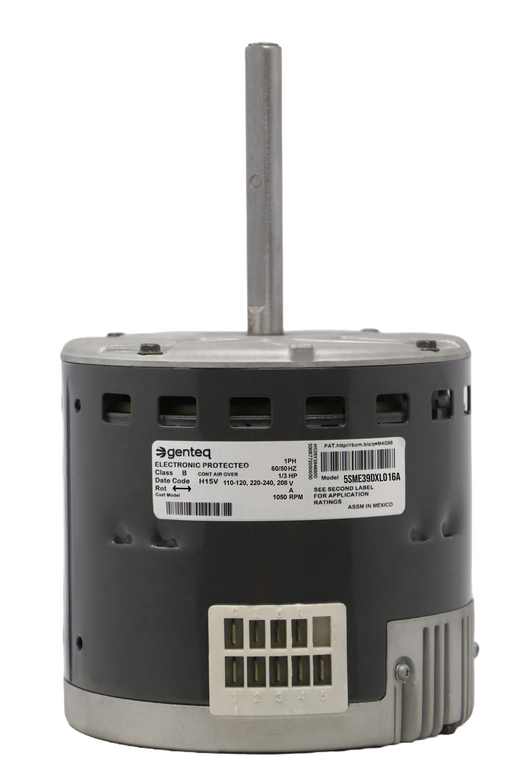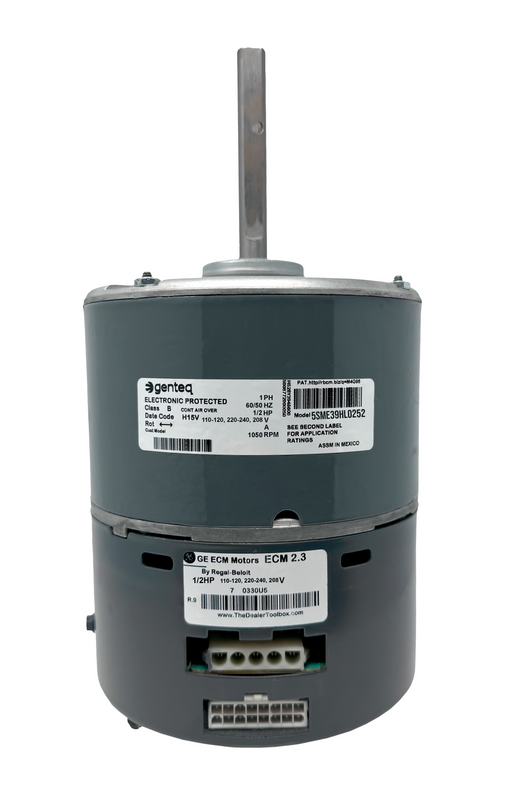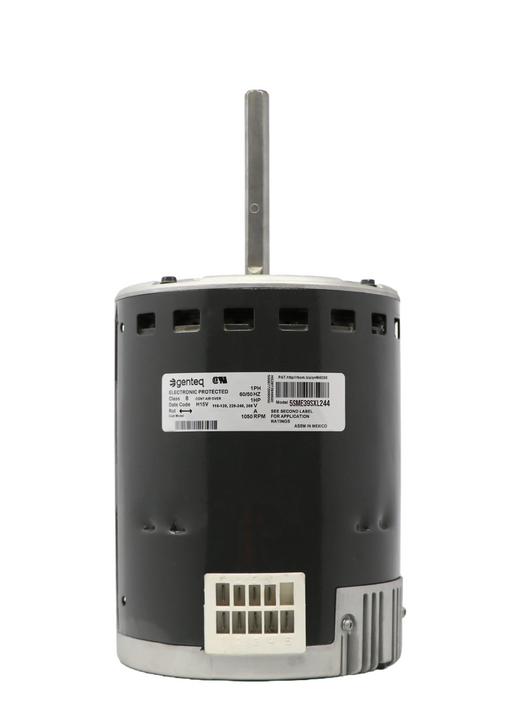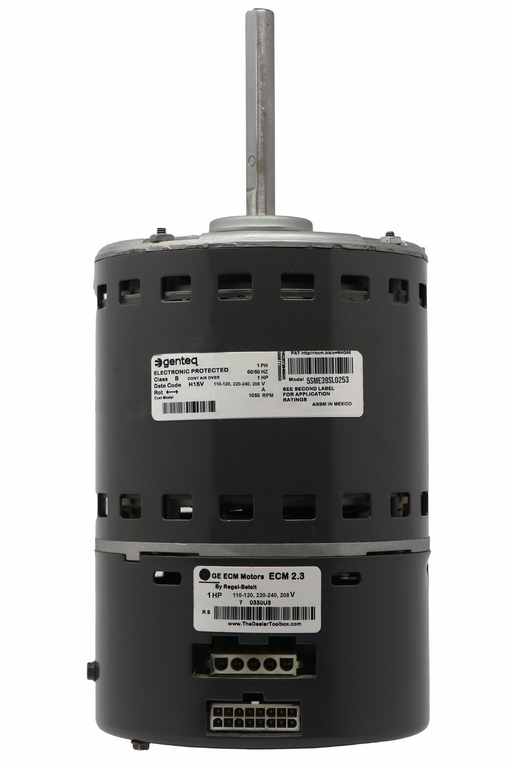(813) 440-8108

Understanding the Different Types of Blower Motors for HVAC Systems
Blower motors are critical components in HVAC systems and are responsible for moving air through and into your home. Understanding the different types of blower motors can help you choose the right one for your needs, whether installing a new system or upgrading an existing one. Each type offers unique efficiency, cost, and performance benefits.
This article will discuss the three main types of blower motors: single-speed, multi-speed, and variable-speed motors. We’ll explore their characteristics, advantages, and ideal applications.
👉🏻 Read More: Upgrading Your HVAC Blower Motor: Benefits, Selection Tips, and Financial Considerations
Types of Blower Motors
1. Single-Speed Blower Motors
Single-speed blower motors operate at one fixed speed. They are the most basic type commonly found in older HVAC systems.
- Operation: Runs at a single, constant speed.
- Efficiency: Less efficient compared to other types.
- Cost: Generally the least expensive.
- Ideal For: Basic heating and cooling needs without variable airflow requirements.
Single-speed motors turn on and off based on the thermostat's demands, leading to more wear and tear and higher energy consumption. These motors are suitable for systems where cost is a significant consideration and precise airflow control is not crucial.
2. Multi-Speed Blower Motors
Multi-speed blower motors can operate at multiple preset speeds. They offer better control over airflow and are more efficient than single-speed motors.
- Operation: Can switch between low, medium, and high speeds.
- Efficiency: More efficient, as it can adjust speed based on demand.
- Cost: Moderately priced.
- Ideal For: Homes that require more precise temperature control and improved comfort.
These motors can run at lower speeds for extended periods, maintaining a more consistent temperature and humidity level while reducing energy use and noise. This makes them an excellent middle-ground option for homeowners looking for improved comfort and efficiency without the higher cost of variable-speed motors.
Remanufactured Motor by United HVAC Motors
2 Year Replacement Warranty (Terms Apply)
Plug n Play - 100% Programmed
Match your Motor Model N...
Remanufactured Motor by United HVAC Motors
2 Year Replacement Warranty (Terms Apply)
Plug n Play - 100% Programmed
Match your Motor Model N...
5SME39DXL016A GE Genteq Blower Motor ECM X13 1/3 HP
5SME39HL0252 GE Genteq Blower Motor ECM 2.3 1/2 HP
3. Variable-Speed Blower Motors
Variable-speed blower motors provide the highest level of control and efficiency. They can adjust their speed continuously to match the home's heating or cooling needs.
- Operation: Adjusts speed dynamically for optimal performance.
- Efficiency: Most efficient, leading to energy savings.
- Cost: Highest initial cost.
- Ideal For: Homes looking for the best comfort and energy efficiency, particularly in variable climates.
Variable-speed motors offer the most precise control over airflow, resulting in consistent temperatures, better humidity control, and significant energy savings. They run quietly and can improve air quality by continuously circulating air through the HVAC system's filtration.
Detailed Comparison
|
Blower Motor Type |
Operation |
Efficiency |
Cost |
Ideal For |
|
Single-Speed |
Fixed single speed |
Low |
Low |
Basic heating and cooling |
|
Multi-Speed |
Multiple preset speeds |
Medium |
Medium |
Precise temperature control |
|
Variable-Speed |
Continuously variable |
High |
High |
Optimal comfort and energy efficiency |
Choosing the Right Blower Motor
Choosing the right blower motor depends on your specific needs and priorities. Here are some factors to consider:
- Budget: Single-speed motors are the most affordable, while variable-speed motors are the most expensive but offer the best efficiency and comfort.
- Energy Efficiency: Variable-speed motors are the best choice for energy savings. Multi-speed motors offer a good balance of cost and efficiency.
- Comfort: Variable-speed motors are ideal for consistent temperatures and better humidity control. Multi-speed motors also improve comfort compared to single-speed options.
- Noise Level: Variable-speed motors are the quietest, running at lower speeds most of the time. Multi-speed motors are quieter than single-speed but can still be louder at higher speeds.
Maintenance and Longevity
Regular maintenance can extend the life of any blower motor. Here are some tips:
- Clean the Motor and Fan Blades: Dust and debris can reduce efficiency and cause wear.
- Lubricate Bearings: Follow the manufacturer's instructions if your motor requires lubrication.
- Check and Replace Belts: Inspect fan belts for wear and replace them as needed.
- Professional Inspections: Schedule regular HVAC system check-ups with a professional to catch potential issues early.
👉🏻 Read More: Understanding Electronically Commutated (ECM) Blower Motors: Efficiency and Performance
Conclusion
Understanding the different types of blower motors can help you decide when selecting an HVAC system. Single-speed motors are cost-effective for basic needs, while multi-speed and variable-speed motors offer better efficiency and comfort. Our selection of high-quality blower motors can provide the perfect solution for those considering an upgrade.
Explore our website's selection of high-quality remanufactured blower motors for those looking to replace or upgrade their blower motor. These options provide reliable performance and cost savings.
5SME39SXL224 GE Genteq Blower Motor ECM X13 1 HP
Remanufactured Motor by United HVAC Motors 2 Year Replacement Warranty (Terms Apply) Plug n Play - 100% Programmed Match your Motor Model N...
View full details5SME39SL0253 GE Genteq Blower Motor ECM 2.3 1 HP
Remanufactured Motor by United HVAC Motors 2 Year Replacement Warranty (Terms Apply) Plug n Play - 100% Programmed Match your Motor Model N...
View full details





